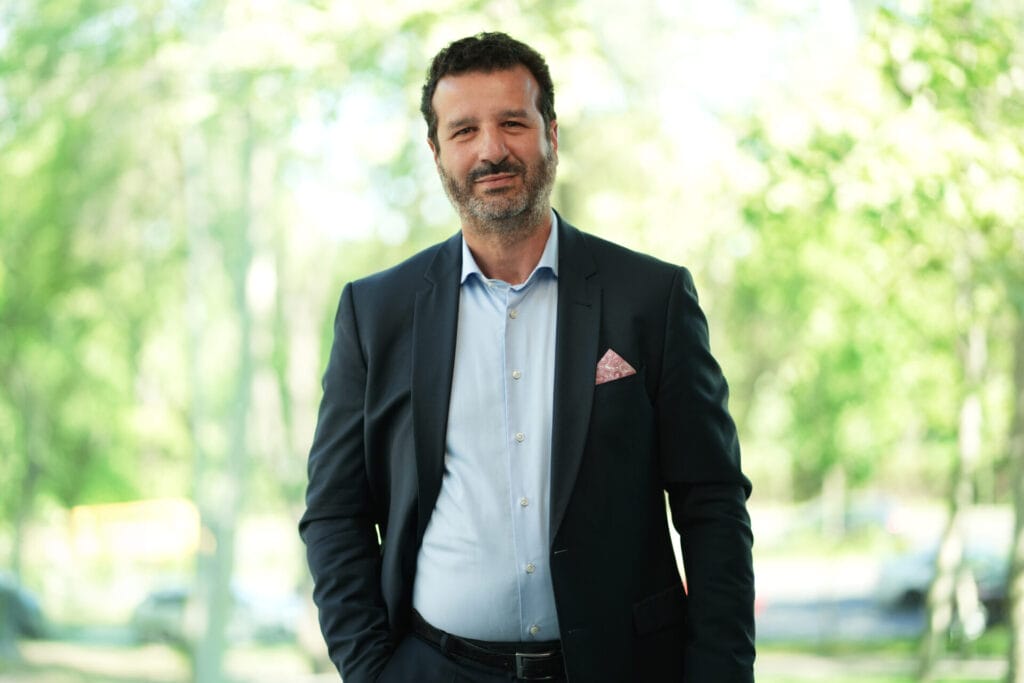Are they good or bad? Can we do away with their use? Why are they becoming increasingly regulated? How do they work and what environmental impact do they have? Pesticides – a blessing in disguise or a curse in return?
Pesticides – are they good or bad?
Pesticides are substances intended for the killing, controlling, or removal of harmful organisms. These organisms can be plants, commonly referred to as weeds, as well as animals like insects and rodents, along with fungi, bacteria, viruses, etc.
Any substance used against these is a pesticide. Generally, pesticides used are chemicals, although sometimes inspiration for their structure comes from nature. Some plants or animals secrete special substances to repel/kill other organisms (InfoBox 1, a-b). By modifying these substances, new pesticides can be created (InfoBox 1, d).
In this sense, it’s not appropriate to classify pesticides as good or bad. However, the harmfulness of a substance depends on the quantity used, the context in which it’s used, and the perceived harm depends on how much we know about that substance.
For instance, the first synthetic pesticides were cheap and were widely accepted for mass use without proper verification. This was the case with DDT, an insecticide used to combat typhus epidemics (a disease transmitted through lice bites) and in agriculture. Its ban was triggered by the publication of the book “Silent Spring,” which raised concerns about unregulated pesticide use.
Even though new pesticides undergo thorough evaluation and study, the general trend is to reduce the amount of pesticides used. To reduce air, water, and soil pollution, the European Commission supports a 50% reduction in pesticide use in agriculture and an increase in sustainable solutions in this sector through the Farm to Fork policy.
Examples of environmentally friendly solutions are crop rotation, the use of natural competitors, or biopesticides.
How do pesticides work?
Practically, pesticides are chemical weapons. These substances halt crucial processes in the life of pests, such as respiration, synthesis of cell membranes, or photosynthesis (InfoBox 1, c). Unable to breathe or produce food, pests are effectively countered, and agricultural crops are saved. The molecular targets of pesticides are proteins, the tiny machines involved in the processes of life. Various proteins perform different roles, from producing energy and digesting food to ensuring nerve signal transmission and generating new cells and tissues. Pesticides block specific proteins, rendering them unable to function, and the targeted organisms die.
However, how do pesticides distinguish between pests and beneficial organisms?
A key aspect of a good pesticide is specificity. While we certainly want to get rid of caterpillars and aphids, it would be a pity to kill bees. A good pesticide selectively attacks the target pest’s organism while being harmless to other organisms (InfoBox 1, e). On a molecular level, the pesticide targets a protein within the pathogenic organism, without affecting proteins with the same role in other organisms. The action is akin to antibiotics – while they kill harmful bacteria, antibiotics are relatively harmless to human cells.

Chrysanthemum cinerariaefolium (a) is a source of natural insecticides called pyrethrins. These substances, numbering six in total, are highly effective in paralyzing insects upon direct contact. Being active against mosquitoes, fleas, flies, ants, and other insects, they are found in over 2000 household use products.

The six natural pyrethrins are similar to the compound “Pyrethrin I” (b). The 2D formula represents, in a minimalist manner, how the carbon, oxygen, and hydrogen atoms are connected in the molecule. Thus, the triangle signifies three carbon atoms connected by single bonds, and the thick/interlocking lines underline the 3D aspect of the molecule.
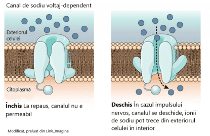
Pyrethrins act on key proteins in the nervous system of insects, which are responsible for transporting sodium ions through the cell membrane (c). Under normal conditions, these channels are open only during a nerve impulse. Under the influence of pyrethrins, these channels remain open after the impulse ceases, and the insect loses control over its movements, ultimately leading to paralysis and death.


Since pyrethrins are rapidly degraded in the environment under the influence of sunlight, modified versions of them have been obtained to increase stability. Pyrethroids are a group of synthetic substances that resemble pyrethrins. Permethrin (on the right) (d) is an example, which, like pyrethrins, has a 3-carbon ring but also contains 2 chlorine atoms in its structure. This modification reduces the rate of substance degradation in the environment.
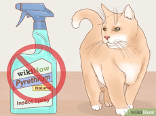
Although not toxic to humans, pyrethrins and pyrethroids are extremely dangerous substances for cats. Cats cannot metabolize these compounds, and exposure to pyrethrins can even be fatal. Thus, the use of solutions against lice/fleas or insecticides containing pyrethrins/pyrethroids is not recommended for cats. In case of exposure, the animal should be taken to the veterinarian immediately to prevent the toxic effects of the insecticide. If you have a cat, please access the link!
What is the environmental and health impact of pesticides?
As mentioned above, pesticides should be specific and harmless to other organisms, primarily humans. However, in reality, the dose determines the effects. It matters which substance is administered, in what dosage, how often, on which crop, or for the control of which pathogen. Moreover, what happens to the pesticide after it has fulfilled its role is important. Of course, protecting agricultural crops is crucial, but we must not forget that pesticides do not disappear on their own and can have adverse effects (InfoBox 2).

Powdery mildew is a disease affecting multiple crops, such as cereals or grapevines (a). Despite its distinct appearance, it is caused by various fungi, and preventing powdery mildew requires the use of fungicides. However, besides acting on the pathogenic fungi, a portion of fungicides inevitably ends up in the soil, where they could potentially have adverse effects, undesirably impacting the soil fertility in question.
In addition to pathogenic fungi, there are numerous fungi that are beneficial to humans. Arbuscular mycorrhizal fungi (AMF) are an important class of filamentous fungi, associated with up to 60% of agricultural crops. They are involved in nutrient absorption and play a crucial role for crops such as wheat, soybeans, or corn. These fungi coexist in symbiosis with plant roots (b), aiding in the absorption of nitrogen, phosphorus, and trace elements, representing up to 50% of the soil’s living component.
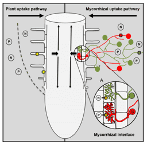
Furthermore, soil fungi are involved in the utilization of organic fertilizers, the controlled release of mineral nutrients to avoid root irritation, and they contribute to plant immunity. Plants associated with AMF (image below) (c) tend to be less susceptible to insect and parasitic worm attacks, as well as to soil-borne pathogens. Fungicides that reach the soil can harm these beneficial fungi, acting similarly to how they affect pathogenic fungi.

The soil harbors multiple organisms that interact complexly with each other. Therefore, predicting how a particular substance will influence the soil ecosystem is challenging and requires intensive studies. One thing is certain, though – the use of pesticides must be rigorously controlled in accordance with scientific findings. Only through such an approach can optimal usage be achieved, minimizing negative environmental impact while maximizing positive effects on agriculture.
As for the impact on human health, the answer, once again, lies in the dose. Pesticides are designed to have minimal impact on human health. However, this approach hasn’t always been in place. The first synthetic pesticides synthesized in the 1940s were inexpensive and were widely accepted for mass use without thorough testing. This is the case with DDT, an organochlorine insecticide. Compounds with chlorine atoms bonded to carbon atoms are very stable, metabolize slowly, and can accumulate in the environment. The political debate surrounding DDT led to the creation of the EPA (Environmental Protection Agency) in the United States. Currently, introducing a new pesticide to the market requires multiple studies to ensure both human and environmental protection.
When used properly and with adherence to safety measures (wearing a respiratory mask, gloves, protective eyewear), following the manufacturer’s recommendations (regarding doses and timing intervals), pesticides should present minimal risks. Skin contact, inhalation, and ingestion of pesticides pose significant health risks. To ensure safety, the use of pesticide concentrates should only be carried out by authorized individuals who have familiarized themselves with the provided information about the substances used, potential risks, and health effects.
Recently, the European Commission has promoted legislation aimed at reducing the quantity of pesticides used – what are the reasons behind this decision?
Reducing the quantity of pesticides is a trend in the EU and is part of the direction towards making agriculture more sustainable, under the initiative known as “Farm to Fork.” This, in turn, is a component of the broader “European Green Deal” project.
“Farm to Fork” involves creating a sustainable agriculture system, reducing greenhouse gas emissions, preserving biodiversity, and preventing negative health impacts caused by both undernutrition and overnutrition. The “European Green Deal” is a EU policy that aims to achieve net-zero greenhouse gas emissions by 2050, ensure economic growth decoupled from non-renewable resource use, and implement comprehensive circular economy policies.
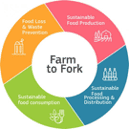
Since the use of pesticides in agriculture contributes to pollution of water, soil, and air, the European Commission plans to reduce the use of chemical pesticides and associated risks by 50%, as well as reducing the use of hazardous pesticides by 50%. Therefore, it’s not about an abrupt cessation of pesticide use, but rather a controlled usage approach, with a preference for newer, environmentally less toxic pesticides.
Can we do without pesticides?
A sudden cessation of pesticide use would trigger an economic crisis due to the rapid spread of pathogens. Crop yields would decrease in both volume and quality, and famine could become routine. Agriculture would face a major challenge – producing the same quantity of food required for global consumption without resorting to pest control. Currently, around 1 billion people are affected by hunger, and agricultural crops compete with over 30,000 species of weeds, 10,000 species of phytophagous insects, and a multitude of harmful species including worms, fungi, and bacteria. From production to storage, transportation, and commercialization, pests pose a risk to compromising crops and creating conditions for famine.
No, at least not now, abandoning pesticides is not a solution. Pesticides enable plants to channel all nutrients into crop production, providing us with disease- and pest-free food. On another level, pesticides facilitate intensive agriculture, freeing us from the need to annually expand cultivated territories to secure surplus harvests. Ironically, pesticides partially conserve biodiversity by allowing the preservation of habitats.
At the same time, we could pose the question differently: Could we reduce the quantity of pesticides used? Could we opt for superior pesticides, i.e., specific, biodegradable, and non-toxic ones? The answer to these questions is a resounding “Yes,” aligning with the goals of the European Commission’s policies.
What alternatives do we have and how can we ensure that using them doesn’t cause harm?
There are multiple strategies other than chemical pesticides. One well-known example is crop rotation. By rotating crops, the cultivated crop in a field changes from season to season. This prevents pathogens that could appear in one season from developing in the same area in the following season. The trick is to alternate crops in a way that avoids common pathogens between the previous and next crops. However, this method has limitations as different crops have varying preferences for soil and climate conditions, and not all crops can be easily rotated. Additionally, this method is limited to annual plants, as orchards cannot be replanted frequently.
Another alternative is biopesticides. Biopesticides are preparations made from plants or microorganisms that control the spread of pests. In this case, we can harness a fascinating biological reality – every organism has weaknesses that are exploited by other organisms. In other words, no organism is invincible; biology has methods for dealing with each one. We discussed pyrethrins earlier, secreted by certain chrysanthemum species, which act as insecticides. The extract from these plants is natural and biodegradable. Another increasingly popular bioinsecticide is neem oil, which targets harmful insects without being toxic to bees, mammals, or birds.
Another method to counteract pathogens is to use their natural competitors. Ladybugs, for example, are effective against aphids. There are also wasps that parasitize caterpillars without posing a threat to humans.
Last but not least, plants can produce their own pesticides. Tobacco (Nicotiana tabacum), for instance, is a plant from the same family as potatoes (Solanum tuberosum) but is resistant to insects. This resistance is due to nicotine, a natural neurotoxic alkaloid that makes this plant valuable. Another example is the walnut tree (Juglans regia), which secretes a substance with herbicidal properties, inhibiting the growth of other plants around it.
Genetic modification is also an important solution, combining efficiency, versatility, and safety. Plants can produce their own pesticides or be modified to retain absorbed pesticides in parts not consumed by humans. Furthermore, enhancing plant resistance to drought/temperature allows cultivation in climatic zones that are unavailable to pathogens, while also reducing losses caused by adverse weather conditions.
When it comes to damage prevention, the answer lies in Research, Regulation, Implementation, and Control. We live in an era of unprecedented scientific data availability, and research continuously yields new results. Directing funding toward safety studies, investigating the impact of agricultural practices on the environment, regulating and controlling practices are crucial steps in creating sustainable policies. This way, we can ensure that negative impacts are minimized and agriculture remains safe and sustainable!

Victor Baerle
He is a graduate in Biochemistry from UVT, and recently started a Master’s program in Bioinformatics. He is passionate about structural bioinformatics, pollution bioremediation, and circular economy.
So far, he has been a member and collaborator at PolyMore.ro, a Romanian start-up involved in detecting household waste contamination. Additionally, he participated in REplasticHack, Games of Science 2022, as well as other projects.
Article first published on InfoClima















